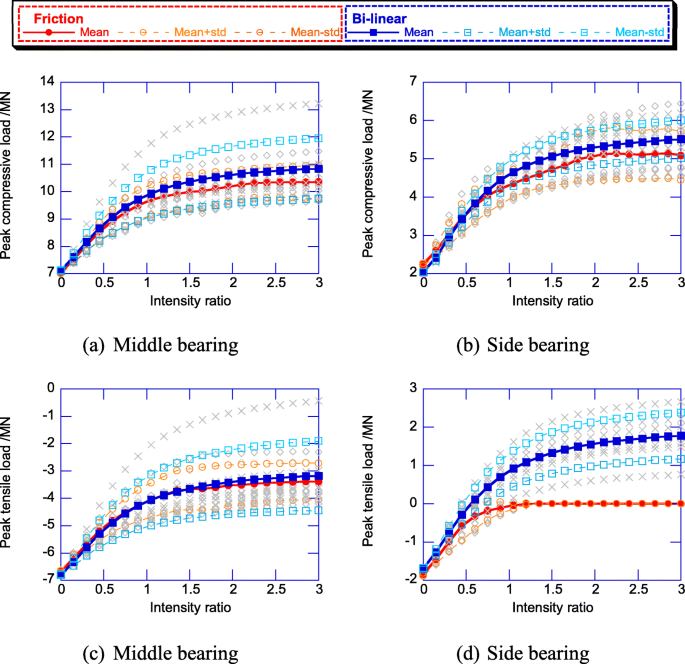

The equations in Table 11-1 are based on the assumption that the length of the cylinder and the dimensions of the plate are infinite. The maximum compressive and tensile bearing stresses occur at the center of the surface of contact and at the edge of the surface of contact, respectively, and the maximum shear bearing stress occurs in the interiors of the compressed parts.

The maximum compressive, tensile, and shear bending stresses ( f brc, f brt and f brs) are given in the third column of Table 11-1. The second column indicates the shape and size of the surface of contact between the two bodies as well as the combined deformation of the bodies, δ. The first column of this table gives the form of the bodies and the dimensions that describe them. Table 11-1 treats the elastic stress and deformations produced by pressure between bodies of various forms. It is noted here that the design of ball and roller bearings is a very specialized area however, their selections for various applications can be made based on data published by the various manufacturers.ġ1.5 Elastic Stresses and Deformation of Various Shapes in Contact An empirical treatment for the determination of allowable loads is also presented. The application to ball and roller antifriction bearings is not covered.Ī brief discussion of bearing stresses in riveted joints is followed by a presentation of theoretically derived equations for the bearing stresses between various shapes in contact. The design information given in this section assumes either static loading or low velocity loading.

They are localized on the surface of the material and may be very high due to the small areas in contact. The stresses developed when two elastic bodies are forced together are termed bearing stresses. This page provides the chapter on bearing stress (also referred to as contact stress) from the "Stress Analysis Manual," Air Force Flight Dynamics Laboratory, October 1986.


 0 kommentar(er)
0 kommentar(er)
